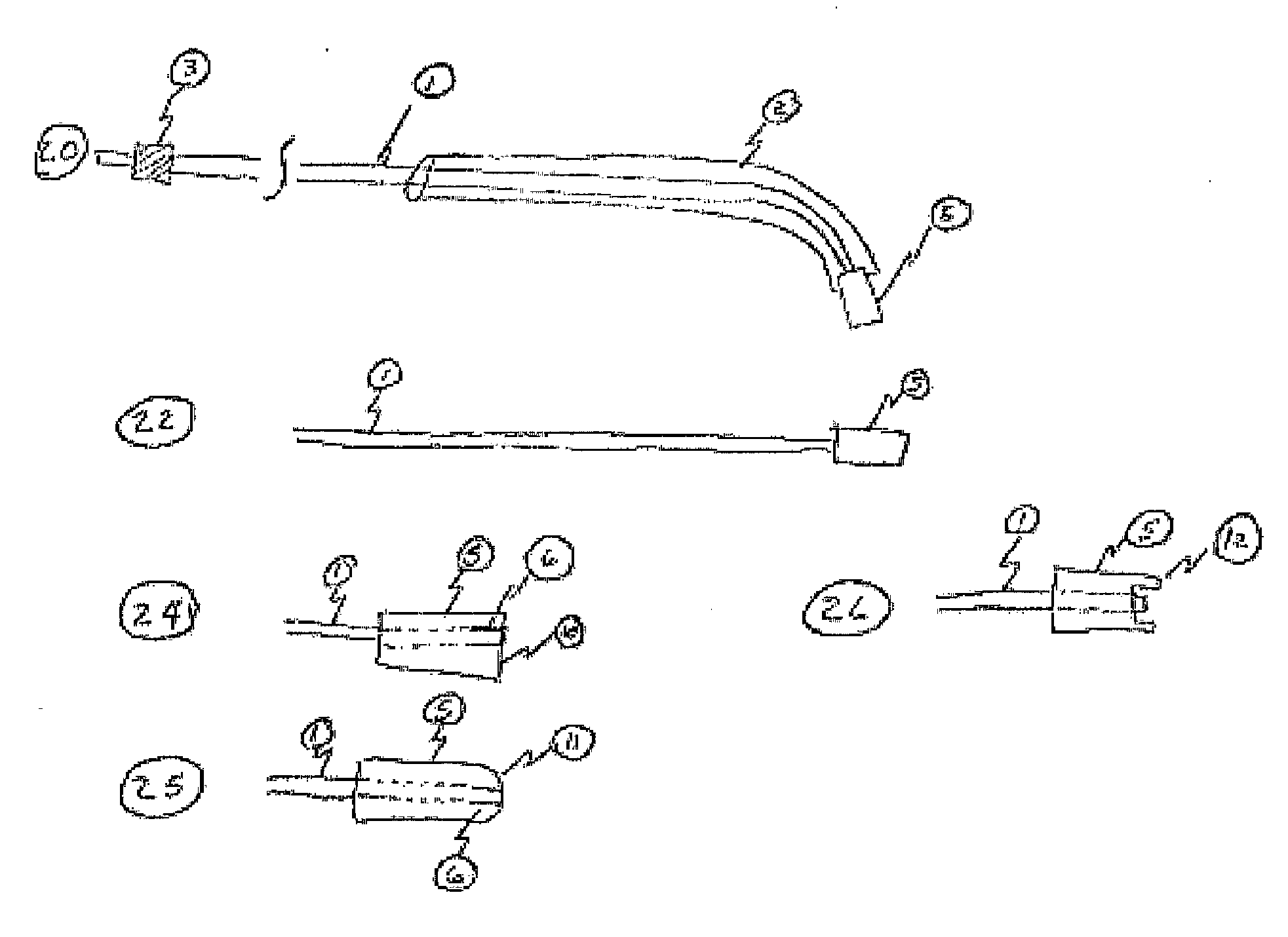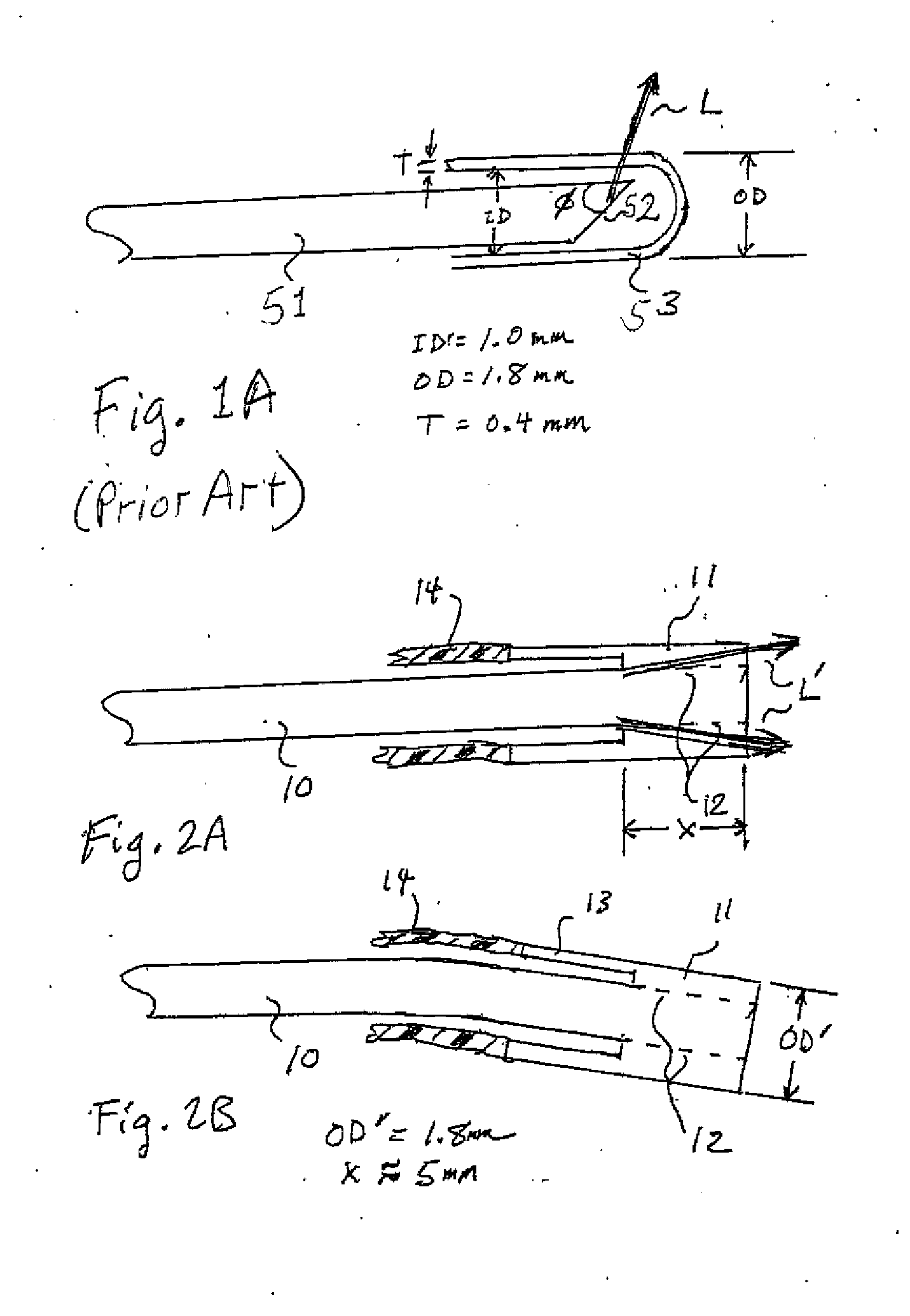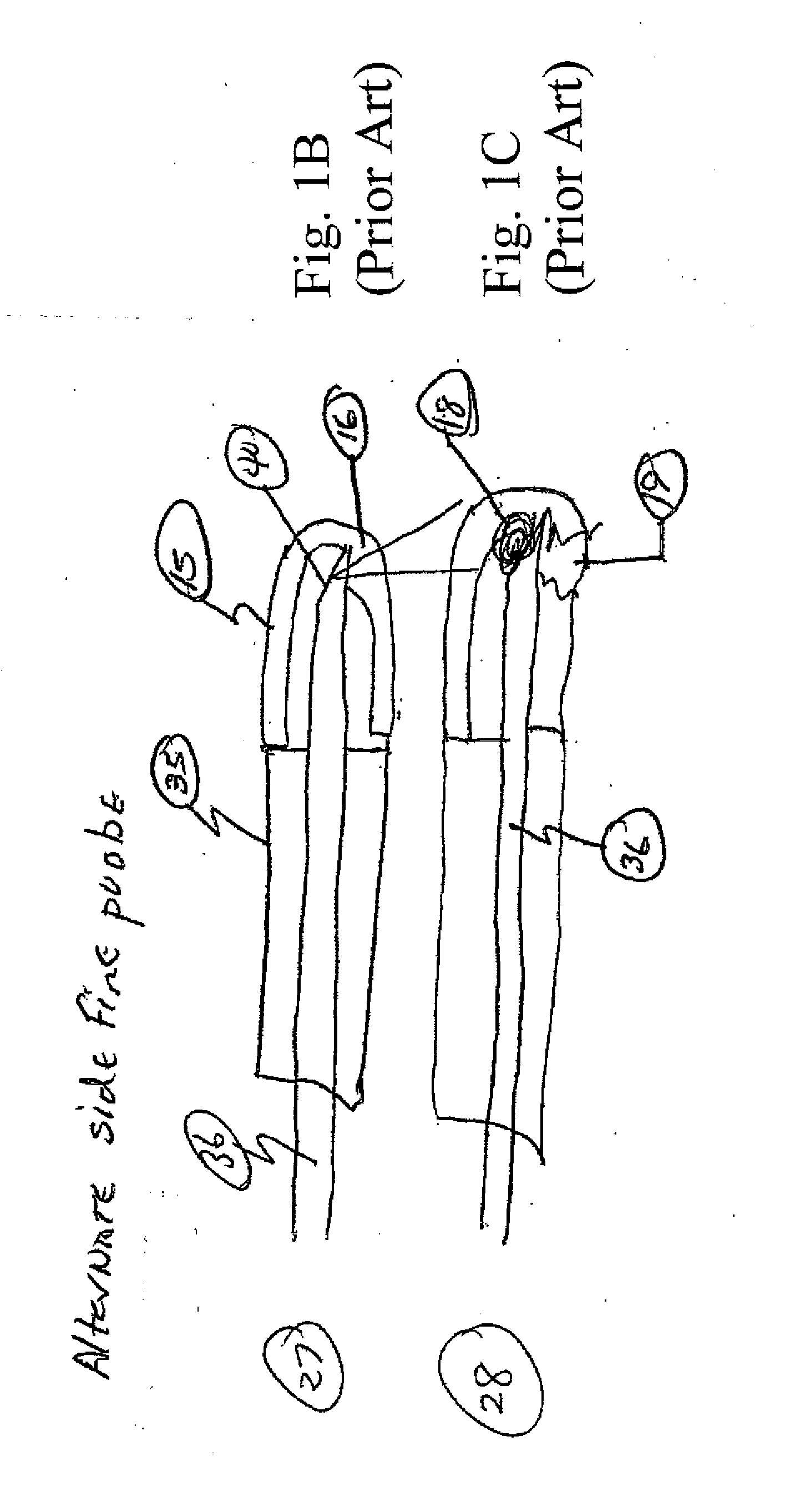End Fire Fiber Arrangements with Improved Erosion Resistance
a technology of erosion resistance and end fire fiber, which is applied in the field of end fire fiber arrangement with improved erosion resistance, can solve the problems of reducing the power density and efficiency of vaporizing tissue, affecting the performance of end fire fiber, so as to improve the resistance to erosion, increase the thickness or length of the ferrule material, and increase the wall thickness
- Summary
- Abstract
- Description
- Claims
- Application Information
AI Technical Summary
Benefits of technology
Problems solved by technology
Method used
Image
Examples
Embodiment Construction
[0024]FIGS. 2A and 2B show an embodiment of the present invention that includes an end-firing optical fiber 10 and a quartz ferrule 11 welded to the distal end of the fiber 10.
[0025]In this embodiment, fiber 10 is preferably sufficiently flexible to enable the fiber to be bent in order to direct laser energy at a desired surface situated to the side of the optical fiber. The ferrule 11 is preferably a quartz ferrule 11 has an index of refraction matched to that of the fiber 10, laser energy L′ disperses to increase the firing angle of the laser.
[0026]The length X of the welded area 12 between the fiber 10 and the ferrule 11 is typically 5 mm or greater. This extended weld gives the fiber 12.5 times greater erosion protection and ensures that the power density will remain high in comparison with a capped fiber arrangement as the power is contained inside the core of the fiber. Those skilled in the art will appreciate that, in this embodiment, the weld can be to the fiber's core or cl...
PUM
 Login to View More
Login to View More Abstract
Description
Claims
Application Information
 Login to View More
Login to View More - R&D
- Intellectual Property
- Life Sciences
- Materials
- Tech Scout
- Unparalleled Data Quality
- Higher Quality Content
- 60% Fewer Hallucinations
Browse by: Latest US Patents, China's latest patents, Technical Efficacy Thesaurus, Application Domain, Technology Topic, Popular Technical Reports.
© 2025 PatSnap. All rights reserved.Legal|Privacy policy|Modern Slavery Act Transparency Statement|Sitemap|About US| Contact US: help@patsnap.com



